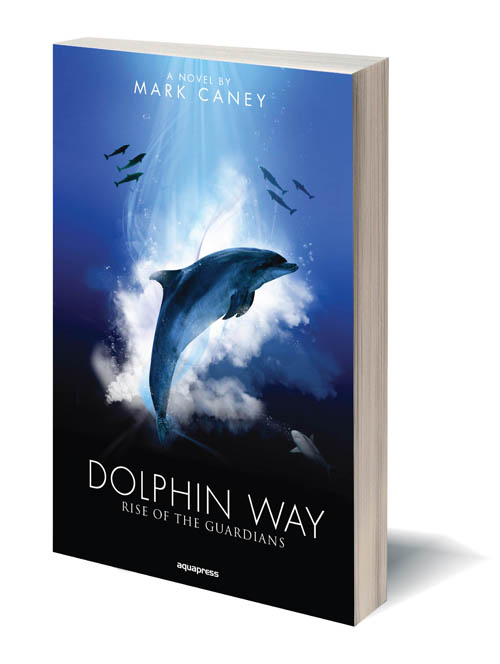Few would argue that dolphins are intelligent. Exactly how intelligent is another matter. The issue is made more complex as humans tend to measure intelligence against their own understanding of it.
Although it may not be directly meaningful, in terms of brain size, the bottlenose dolphin brain averages 1.6 kg in size, by comparison, the average human brain weighs about 1.35 kg and a chimpanzee’s brain weighs 0.4 kg. A more useful measure is to compare actual brain size with that expected for the species body size. This known as the “Encephalization Quotient” (EQ) and is the ratio of brain size relative to body size. By this measure, brains with EQs larger than 1 are bigger than the expected size, while those with EQs less than 1 are smaller. Humans have the highest EQ at 7.4, but bottlenose dolphins have EQs of 5.3, significantly higher than all other animals. This figure may be also be distorted by environmental demands; a dolphin needs much more blubber than a human just to maintain body temperature, so the ratio may be somewhat skewed and the dolphin EQ is effectively lowered from a real comparison point. Without the need for so much extra insulation because of the water, the dolphin EQ would be significantly higher.
Research suggests that bottlenose dolphins are self-aware, a trait which is considered to be a sign of highly-developed, abstract thinking. One such indicator is that they have been shown to be able to recognise themselves in a mirror, a behaviour that until recently has only been recorded in humans and great apes. Interestingly, unlike most animals, they are also interested in television. Whereas chimps only learned to respond appropriately to television after a long period of training, dolphins respond appropriately to the images from the first time they were exposed.
Dolphins frequently play with things they find in their environment and have been even been seen to use them as tools. In Australia, bottlenose dolphins take marine sponges that they break off the seafloor and wear them over their closed rostrum as protection while they probe into the seabed for fish. There is evidence to suggest that they pass this skill on from one individual to another.
Dolphins – Deep Thinkers Part 1
Dolphins do not only respond to the basic needs of their lives; they are extremely playful, for example, producing underwater bubble rings, which they can do in either the horizontal or vertical plane. They mainly do this by either swimming repeatedly in a circle and then injecting air into the helical vortex currents formed or by rapid exhalation of a burst of air into the water and allowing it to rise to the surface in a ring. They frequently then spend time examining their creation both visually and with sonar.
Dolphins – Deep Thinkers Part 3
In one experiment, two dolphins were rewarded whenever they came up with a new behaviour, for example a physical action that they would not normally perform such as a kind of tail slap on the surface. It took them a while to work out what was required of them before they realised, but then they started to offer all kinds of novel behaviours, to the point where the trial was stopped because their behaviours became too complex to make further positive reinforcement meaningful. When the experiment was repeated with humans, it took the volunteers roughly the same length amount of time to grasp what they were being asked to do, although they did not then continue on to create the range of behaviours the dolphins did.
Another example of interesting behaviour suggesting intelligence concerns a dolphin named Kelly at the Institute for Marine Mammal Studies in Mississippi. The dolphins there are trained to collect any rubbish that inadvertently falls into their pens and then give it to a trainer the next time they see one. They are then rewarded with a fish. Kelly worked out that the size of the piece of rubbish does not affect the reward. So instead of handing over a piece of litter immediately, she stores it under a rock in the tank and tears it into small pieces and hands them back one at a time. This strategy suggests that Kelly has a sense of future and is prepared to delay gratification. She has also in a way turned the tables — she has effectively trained the humans to do what she wants.
It is probable that dolphin intelligence would have developed somewhat differently to humans. Humans tend to manipulate their environment in order to meet their needs, and based on the simple fact that they have hands, can change things and are able to create complex aids to communication, ranging from the simple written word to the sophisticated electronics. Without the ability or need to manipulate their environment, dolphins must focus their considerable intelligence on other concerns that are relevant to their lives, and may well have specifically developed talents presently beyond our understanding.
Would you like to learn more about the lives of dolphins in a fun and entertaining way? Get the novel Dolphin Way – although it’s fiction, it is full of factual information about the way dolphins live and interact.
In the novel Dolphin Way, the dolphins have their own culture and language with oral histories that explain their racial memories of how they and humans went their separate ways, with radically different results. You can get the book or just download the first section for free here.

